Edgar Josymar Torrejón Magallanes
Ph.D. Fisheries and Aquaculture Bioeconomics
Centro Interdisciplinario de Ciencias Marinas (CICIMAR)
Biography
I am from Lima, Peru, and thanks to my career I have been able to know many places and live in some of them, such as Ensenada (Baja California, México), Bilbao (Basque Country), La Paz (Baja California Sur, México). I received a BSc in Fishery Biology at the Universidad Nacional Mayor de San Marcos (UNMSM). After that, I worked at the Instituto del Mar del Perú (IMARPE) from 2010 - 2012 and 2014 - 2018 as a fishery scientist. I was researching and working on population dynamics, stock assessment models of straddling and highly migratory species such as dolphinfish (Coryphaena hyppurus), horse mackerel (Trachurus murphyi), Pacific chub mackerel (Scomber japonicus), in the development and improvement of software tools for stock assessment and technical reports. Also, I was part of the Peruvian anchovy (Engraulis ringens) stock assessment group.
In 2014 I received a MSc in Marine Ecology at CICESE. In August 2022, I received a Ph.D. at the Centro Interdisciplinario de Ciencias Marinas (CICIMAR, Mexico), where I was researching on the bio-economic impact assessment of different management strategies in the Peruvian industrial fisheries.
Download my CV.
Interests
- Fisheries Bioeconomics
- Fish Population Dynamics
- Quantitative Analysis of Fisheries
- Species Distribution Modeling
- Development of R packages
Education
-
Ph.D. in Fisheries and Aquaculture Bioeconomics, 2018 - 2022
Centro Interdisciplinario de Ciencias Marinas (CICIMAR - IPN, México)
-
MSc in Marine Ecology, 2012 - 2014
Centro de Investigación Científica y Educación Superior Ensenada (CICESE, Mexico)
-
BSc in Biology (Hidrobiology and Fisheries Science), 2005 - 2009
Universidad Nacional Mayor de San Marcos (UNMSM, Perú)
Skills
R/RStudio
100%
Population dynamics
80%
WHAM / FLBEIA
75%
Distribution modeling
75%
RMarkdown / LaTeX
70%
Bayesian statistics (INLA)
50%
Experience
Professional and Research
Scientific advisor
Sustainable Fisheries Partnership (SFP)
Responsibilities:
- Conduct scientific analysis and targeted research supporting SFP’s strategy to improve fisheries management in different fisheries of interest to the Global Fisheries Program.
Associated scientific researcher
Cousteau Consultant Group
Responsibilities:
- Instructor in fish populations dynamics, stock assessment, species distribution modeling and statistics using R.
- Organize scientific talks.
Research intership
AZTI
Research intership
Inter American Tropical Tunna Commision (IATTC)
Researcher
Instituto del Mar del Perú (IMARPE)
Researcher
Instituto del Mar del Perú (IMARPE)
Scientific Events
Coming soon
Small Pelagic Fish New Frontiers in Science and Sustainable Management
Open Science Conference on Eastern Boundary Upwelling Systems (EBUS) Past, Present and Future and Second International Conference on the Humboldt Current System
Projects
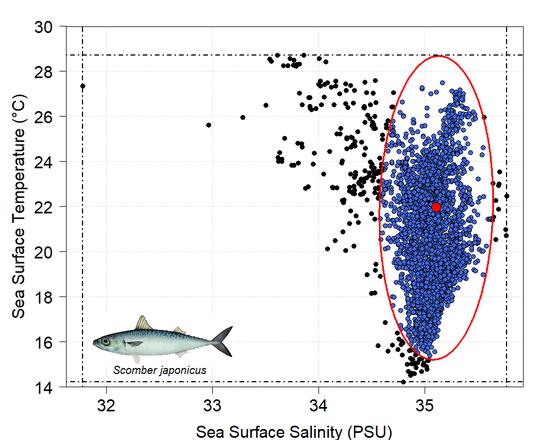
Ecological Niche models (ENM)
This project is focus on the Ecological Niche Modeling (ENM) using different tools such as kuenm and ntbox R packages. I am working with Luis Enrique Ángeles-González from UNAM (Mexico). We are projecting climate change scenarios to assess the vulnerability of commercially important marine species, such as red octopus (Octopus maya) in Mexico and Pacific chub mackerel (Scomber japonicus) in Peru.
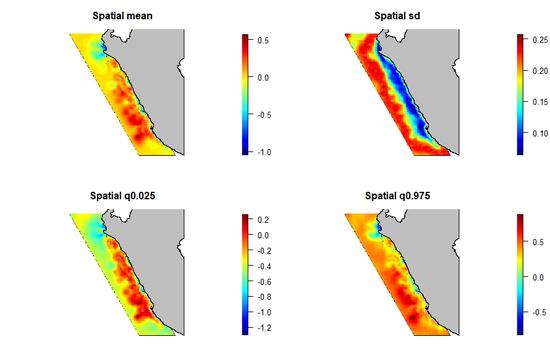
Species Distribution Models (SDM)
This project is focus on the Species Distribution Modeling (SDM) of pelagic species. I am working applying a Hierarchical Bayesian models (HBM) to incorporate the spatiotemporal correlation, which can improve both the models and predictions of the species distribution pattern than traditional SDMs methods. We are using a large time series fishery-dependent database to predict the habitat distribution of different pelagic species in the northern Peruvian Current system.
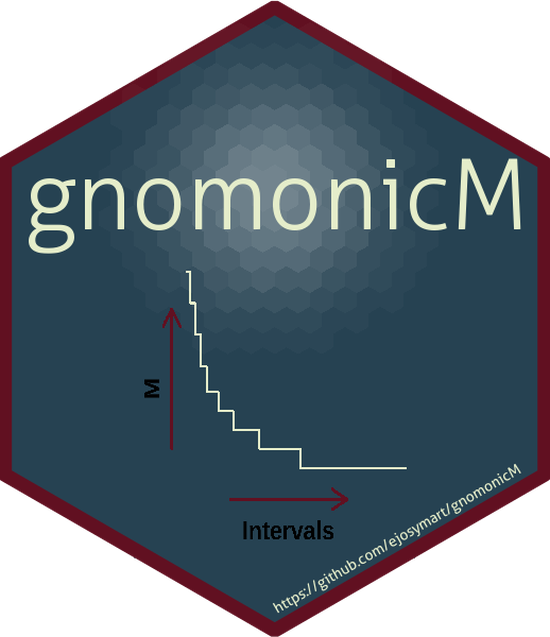
Natural mortality estimation (alternative to metapopulation analysis)
This is an R-package to estimate Natural Mortality (M) throughout the life history of species, mainly for fish and invertebrates, based on the gnomonic interval approach (Caddy, 1991, 1996; Martínez-Aguilar et al., 2005). I have included improvements modifying some equations and the estimation procedure.
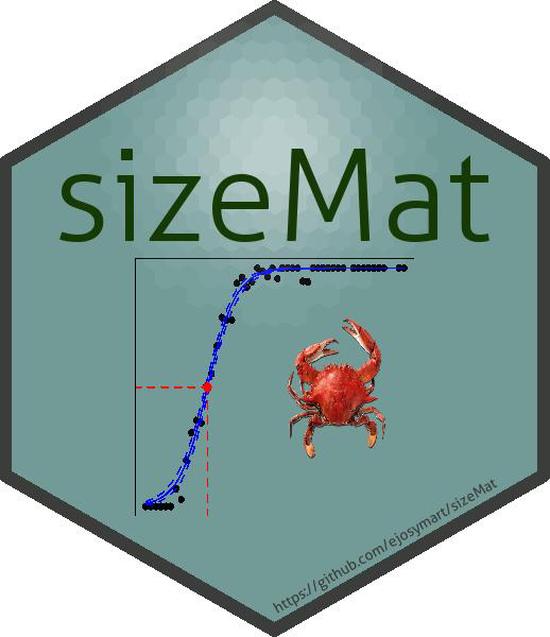
Estimate Size at Sexual Maturity
This is an R-package to estimate Size at Morphometric and Gonadal Maturity for organisms, usually fish and invertebrates. It includes methods for classification based on relative growth (principal components analysis, hierarchical clustering, discriminant analysis), logistic regression (frequentist or Bayes), parameters estimation and some basic plots. The estimation of morphometric maturity used two allometric variables and is based on the relative growth. On the other hand, the estimation of gonadal maturity used one allometric variable and the stage of sexual maturity (gonad maturation stage).
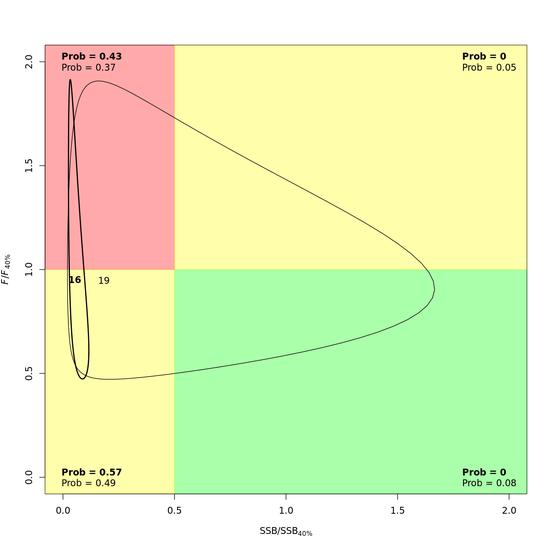
WHAM a state-space age-structured assessment model
The Woods Hole Assessment Model (WHAM) is a general state-space age-structured stock assessment framework developed by Tim Miller and Brian Stock from NOAA. This model is designed to include environmental effects on population processes. The state-space framework is attractive because it can estimate observation and process error, as well as naturally propagate random effect parameters in stock projections. WHAM has many similarities to ASAP (Age Structured Assessment Program) (Legault and Restrepo 1998), including the input data file structure. Currently, the stock assessment of my thesis research follows the WHAM framework.

FLBEIA Bioeconomic Impact Assessment using FLR
Simulation model developed by Dorleta Garcia from AZTI focus on the bio-economic impact assessment of the different fisheries management strategies. FLBEIA is a free and open software that covers the entire cycle of the fisheries management process, data collection, stock assessment, advice (based on TAC or effort), and implementation. Thus, FLBEIA makes it possible to evaluate management strategies, both from a biological and economic point of view, to facilitate management decisions in the medium and long term. Currently, I am using this simulation model and the Management Strategy Evaluation (MSE) approach in my thesis research.
Presentations
Distribution modeling of dolphinfish (Coryphaena hippurus) in the Pacific Ocean off Peru, Evidence of seasonnal pattern
CPUE standardization and spatio-temporal distribution modelling of dorado (Coryphaena hippurus) in the Pacific Ocean off Peru
Publications
Contact
- etorrejonm1700@alumno.ipn.mx
- Av. Instituto Politécnico Nacional s/n, La Paz, Baja California Sur 23096
- Monday - Thursday 09:00 to 16:00
- DM Me





